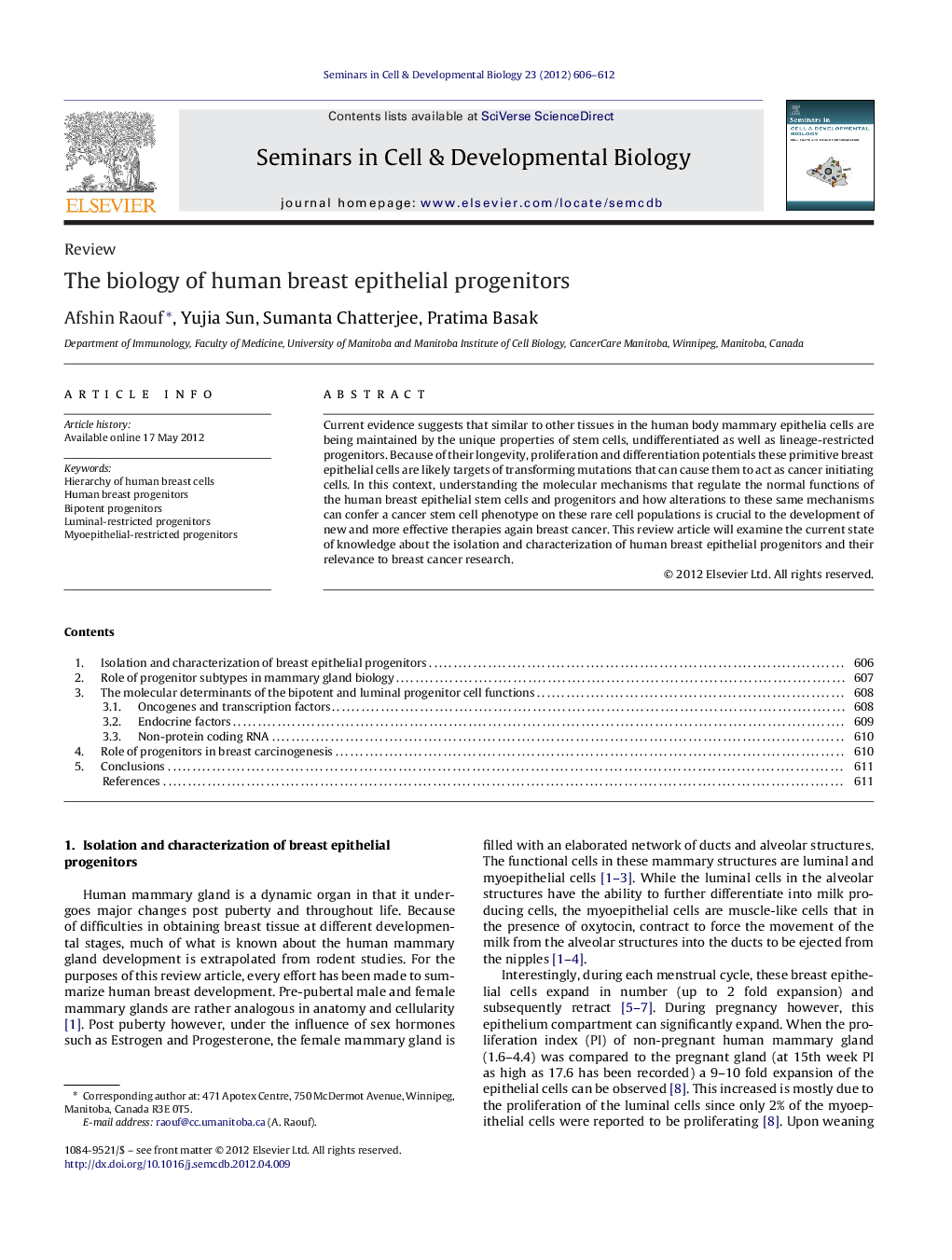| کد مقاله | کد نشریه | سال انتشار | مقاله انگلیسی | نسخه تمام متن |
|---|---|---|---|---|
| 2202712 | 1100383 | 2012 | 7 صفحه PDF | دانلود رایگان |

Current evidence suggests that similar to other tissues in the human body mammary epithelia cells are being maintained by the unique properties of stem cells, undifferentiated as well as lineage-restricted progenitors. Because of their longevity, proliferation and differentiation potentials these primitive breast epithelial cells are likely targets of transforming mutations that can cause them to act as cancer initiating cells. In this context, understanding the molecular mechanisms that regulate the normal functions of the human breast epithelial stem cells and progenitors and how alterations to these same mechanisms can confer a cancer stem cell phenotype on these rare cell populations is crucial to the development of new and more effective therapies again breast cancer. This review article will examine the current state of knowledge about the isolation and characterization of human breast epithelial progenitors and their relevance to breast cancer research.
► Summarize current methodology for isolation of purified subpopulations from human breast tissue.
► Discuss human breast epithelial progenitor subtypes in context of normal breast development.
► Look at molecular mechanisms that regulate proliferation and differentiation of progenitor subtypes in the mammary gland.
► Discuss the relationship between malignant and normal breast stem cells and progenitors.
► Explore their implication in providing a framework to hypothesize new and more effective therapies to treat breast cancer.
Journal: Seminars in Cell & Developmental Biology - Volume 23, Issue 5, July 2012, Pages 606–612